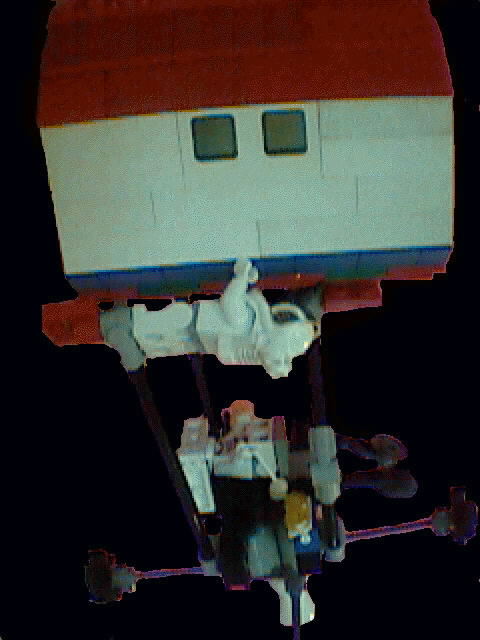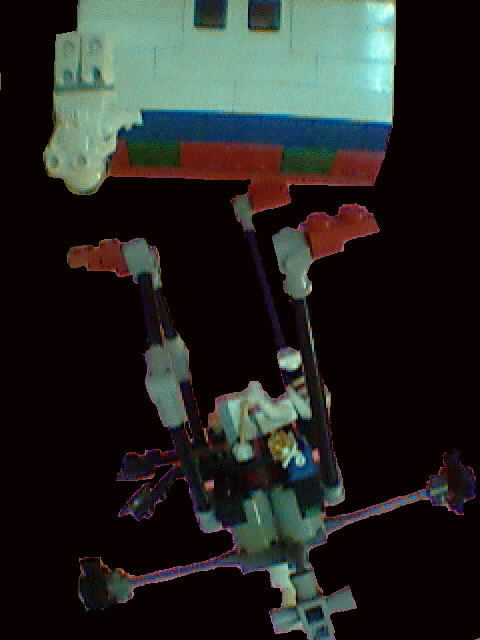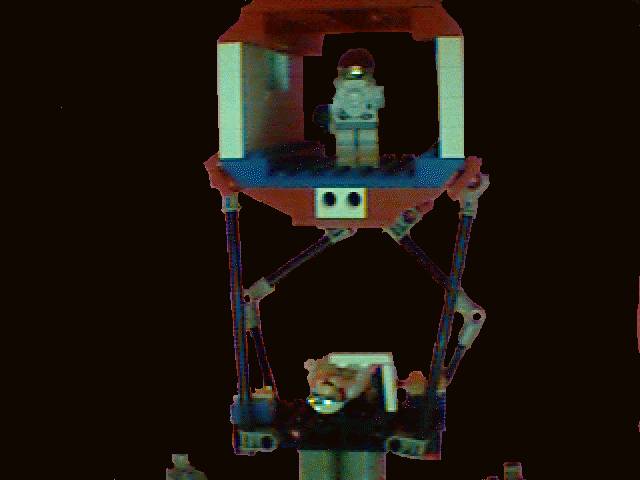

OTV-35 is approaching LEO transfer point 2, where it will pick up a module to transfer to the space station Bricklyn.
In the first picture, we see OTV-35 slowly approaching the module. When it's nearly touching, a waiting spacejock helps secure the grapple arms to the module.

Once the OTV and module are joined, the center of gravity and moments of inertia are downloaded to the OTV's flight computer. The computer will determine if the OTV's thrusting and maneuvering engines can accelerate the module without imparting a rotation, if not, then the grapple arms may need to be repositioned.
The spacejack asks for a lift to the space station Bricklyn, since she is due there soon, and she doesn't want to wait for the bext shuttle. The OTV pilot adds another 90 kg to the cargo mass, and asks her to stay in the middle of the module, to minimize the moment of inertia.

Next a small test firing it done, about a 1 m/s impulse. Sensors then check that there is no imparted rotation, and the velcoity change was sufficient. If everything is ready to go, the computed trajectory is started; next stop space station Bricklyn.
Midway through the orbit, the OTV rotates 180 degrees, to have the main thruster pointing at the space station. Then, as the OTV and cargo approach the space station, the main thruster fires, slowing down the OTV and cargo until it stops at the space station. Then, the OTV goes off for another pickup.
A typical shift lasts about 8 hours, though most OTVs have an oxygen feed to supply the astronaut, allowing shifts up to 2 days. Such extrene shifts are very rare, and have only been called for during rescue operations.